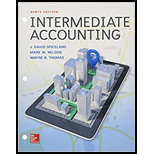
Use of ratios to compare two companies in the same industry
• LO4–10
Presented below are condensed financial statements adapted from those of two actual companies competing in the pharmaceutical industry—Johnson and Johnson (J&J) and Pfizer, Inc. ($ in millions, except per share amounts).
Required:
Evaluate and compare the two companies by responding to the following questions. Note: Because two-year comparative statements are not provided, you should use year-end balances in place of average balances as appropriate.
1. Which of the two companies appears more efficient in collecting its
2. Which of the two firms had greater earnings relative to resources available?
3. Have the two companies achieved their respective
4. From the perspective of a common shareholder, which of the two firms provided a greater rate of return?
5. From the perspective of a common shareholder, which of the two firms appears to be using leverage more effectively to provide a return to shareholders above the rate of return on assets?
($ in millions, except per share data)
| J&J | Pfizer | |
| Assets: | ||
| Cash | $ 5,377 | $ 1,520 |
| Short-term investments | 4,146 | 0,432 |
| Accounts receivable (net) | 6,574 | 8,775 |
| Inventories | 3,588 | 5,837 |
| Other current assets | 3,310 | 3,177 |
| Current assets | 22,995 | 29,741 |
| Property, plant, and equipment (net) | 9,846 | 18,287 |
| Intangibles and other assets | 15,422 | 68,747 |
| Total assets | $ 48,263 | $116,775 |
| Liabilities and Shareholders’ Equity: | ||
| Accounts payable | $ 4,966 | $ 2,601 |
| Short-term notes | 1,139 | 8,818 |
| Other current liabilities | 7,343 | 12,238 |
| Current liabilities | 13,448 | 23,657 |
| Long-term debt | 2,955 | 5,755 |
| Other long-term liabilities | 4,991 | 21,986 |
| Total liabilities | 21,394 | 51,398 |
| Capital stock (par and additional paid-in capital) | 3,120 | 67,050 |
| 30,503 | 29,382 | |
| Accumulated other comprehensive income (loss) | (590) | 195 |
| Less: |
(6,164) | (31,250) |
| Total shareholders’ equity | 26,869 | 65,377 |
| Total liabilities and shareholders’ equity | $ 48,263 | $116,775 |
| Income Statements | ||
| Net sales | $ 41,862 | $ 45,188 |
| Cost of goods sold | 12,176 | 9,832 |
| Gross profit | 29,686 | 35,356 |
| Operating expenses | 19,763 | 28,486 |
| Other (income) expense—net | (385) | 3,610 |
| Income before taxes | 10,308 | 3,260 |
| Tax expense | 3,111 | 1,621 |
| Net income | $ 7,197 | $ 1,639* |
| Basic net income per share | $2.42 | $ 0.22 |
* This is before income from discontinued operations.
1.
Financial Ratios
Financial ratios are the metrics used to evaluate the capabilities, profitability, and overall performance of a company.
To Determine: The more efficient company out of the two companies in collecting its accounts receivable, and managing its inventory.
Explanation of Solution
- Accounts receivables turnover ratio
Accounts receivables turnover ratio is mainly used to evaluate the collection process efficiency. It helps the company to know the number of times the accounts receivable is collected in a particular time period. Main purpose of accounts receivable turnover ratio is to manage the working capital of the company. This ratio is determined by dividing credit sales and sales return.
Formula:
- Average collection period
Average collection period is used to determine the number of days a particular company takes to collect accounts receivables.
Formula:
- Inventory turnover ratio:
Inventory turnover ratio is used to determine the number of times inventory used or sold during the particular accounting period.
Formula:
- Days’ in inventory:
Days’ in inventory are used to determine number of days a particular company takes to make sales of the inventory available with them.
Formula:
| Company | Inventory turnover ratio | Average collection period |
Inventory turnover ratio | Average days in inventory |
| J | 6.37 times (a) | 57 days (c) | 3.39 Times (e) | 108 Days (g) |
| P | 5.15 times (b) | 71days (d) | 1.68 Times (f) | 217 Days (h) |
(Table 1)
Working Notes:
Calculate the Accounts Receivable turnover ratio for Company J.
Calculate the Accounts Receivable turnover ratio for Company P.
Calculate the Average collection period for J.
Calculate the Average collection period for P.
Calculate the inventory turnover ratio for J.
Calculate the inventory turnover ratio for P.
Calculate the average days in inventory for J.
Calculate the average days in inventory for P.
- Based on Accounts receivable ratio, the Company J collects their credit receivables within 57 days which is less than 14 days of Company P. Hence, Company J is preferable.
- Based on Inventory turnover ratio, Company J sells its inventory twice more than Company P. Hence, the Company J is preferable.
2.
Explanation of Solution
Return on assets
Return on assetsis calculated by dividing net income by average total sales. It suggests investor, manager how efficient the management is at utilizing its assets to generate earnings.
| Company | Rate of Return on Assets |
| J | 14.90% (i) |
| p | 1.40% (j) |
(Table 2)
Working Notes:
Calculate the Rate of return on assets for J.
Calculate the Rate of return on assets for P.
Return on assets reports the overall profitability of the company. In this case, Company J has higher rate of profitability compared to Company P.
3.
Explanation of Solution
Profit margin
Profit margin on sales is calculated by dividing net income by net sales. It ascertains important dimension of a company’s profitability.
| Company | Rate of Return on Assets |
| J | 14.90% (k) |
| p | 1.40% (l) |
(Table 3)
Working Notes:
Calculate the Rate of return on assets for J.
Calculate the Rate of return on assets for P.
In this case, the profit margin and assets turnover for Company J is comparatively higher than Company P, since the combination of profit margin and assets turnover are not similar. Hence, Company J has higher rate of return on assets.
4.
Explanation of Solution
Return on shareholders’ equity
Return on shareholders’ equity is calculated by dividing net income by average shareholders’ equity. It reveals the profit of the company generates with the money shareholders’ have invested.
| Company | Rate of return on shareholders' equity |
| J | 26.80% (m) |
| p | 2.50% (n) |
(Table 4)
Working Notes:
Calculate the Rate of return on shareholders’ equity for J.
Calculate the Rate of return on shareholders’ equity for P.
In this case, Company J provides higher rate of return on shareholders’ equity compared to Company P.
5.
Explanation of Solution
Equity multiplier shareholders’ equity
Equity multiplier shareholders’ equity is used to measure the company’s financial leverage. It indicates the extent to which a company uses its equity to pay all its assets. If equity multiplier ratio is high it indicates high debt, if the ratio is low it indicates low debt to the company.
| Company | Equity multiplier shareholders' equity |
| J | 1.80 (o) |
| p | 1.79 (p) |
(Table 5)
Working Notes:
Calculate the equity multiplier shareholders’ equity for J.
Calculate the equity multiplier shareholders’ equity for P.
In this case, both the companies are having similar equity multipliers, indicating that both the companies are using leverage to certain level to earn return from equity which is higher than return on assets.
Want to see more full solutions like this?
Chapter 4 Solutions
INTERMEDIATE ACCOUNTING(LL)-W/CONNECT
- I need guidance with this general accounting problem using the right accounting principles.arrow_forwardI need help finding the accurate solution to this general accounting problem with valid methods.arrow_forwardPlease provide the correct answer to this general accounting problem using accurate calculations.arrow_forward
- Please provide the accurate answer to this general accounting problem using appropriate methods.arrow_forwardI am trying to find the accurate solution to this general accounting problem with appropriate explanations.arrow_forwardPlease help me solve this general accounting question using the right accounting principles.arrow_forward
 Fundamentals of Financial Management, Concise Edi...FinanceISBN:9781285065137Author:Eugene F. Brigham, Joel F. HoustonPublisher:Cengage Learning
Fundamentals of Financial Management, Concise Edi...FinanceISBN:9781285065137Author:Eugene F. Brigham, Joel F. HoustonPublisher:Cengage Learning Fundamentals of Financial Management, Concise Edi...FinanceISBN:9781305635937Author:Eugene F. Brigham, Joel F. HoustonPublisher:Cengage Learning
Fundamentals of Financial Management, Concise Edi...FinanceISBN:9781305635937Author:Eugene F. Brigham, Joel F. HoustonPublisher:Cengage Learning Financial Accounting: The Impact on Decision Make...AccountingISBN:9781305654174Author:Gary A. Porter, Curtis L. NortonPublisher:Cengage Learning
Financial Accounting: The Impact on Decision Make...AccountingISBN:9781305654174Author:Gary A. Porter, Curtis L. NortonPublisher:Cengage Learning Cornerstones of Financial AccountingAccountingISBN:9781337690881Author:Jay Rich, Jeff JonesPublisher:Cengage LearningCentury 21 Accounting Multicolumn JournalAccountingISBN:9781337679503Author:GilbertsonPublisher:Cengage
Cornerstones of Financial AccountingAccountingISBN:9781337690881Author:Jay Rich, Jeff JonesPublisher:Cengage LearningCentury 21 Accounting Multicolumn JournalAccountingISBN:9781337679503Author:GilbertsonPublisher:Cengage





